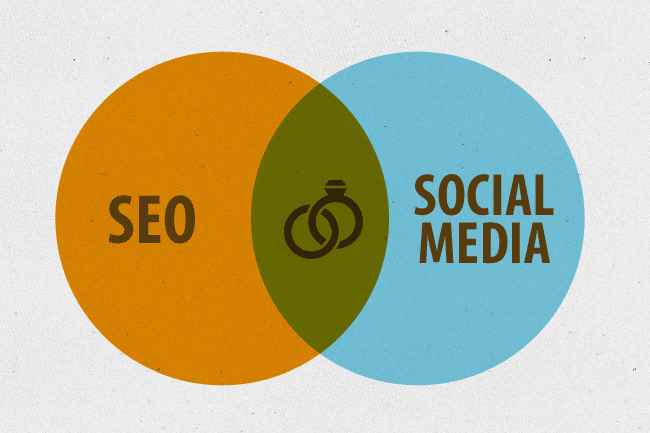- User Experience in SEO rankings has been an important concept in all of digital marketing. While User Experience places much emphasis on general satisfaction, usability of a website, and intuitiveness, Search Engine Optimization thrives on the optimization of a site’s visibility and ranking on search engine results pages. The interplay between UX and SEO is undeniable. Search engines are paying more attention to user-centered metrics because it’s quite easy to know that good user experience is a characteristic or trademark of a relevant, quality site. Engaging sites that retain visitors would rank better accordingly.
- Professional SEO services can hence be very important in harnessing the effective impact of UX on SEO rankings. Such services provide a tailored strategy for improving both user experience and SEO. Also, a technical SEO guide can fix deep site issues that are painful to the user experience, and a content marketing guide will ensure such content is relevant for users while supporting SEO goals. Together, these resources can make a world of difference in your website’s performance and the type of visibility it achieves in search engines.
What is User Experience (UX)?
- The resultant experience that a person derives from interacting with any product, system, or service is called User Experience. It includes all the touchpoints the end-user may have with the company and its services and products. The major concerns of UX are to make the experience easy, efficient, pleasingly satisfying, and overall pleasant for the user. Here are some of the main elements constituting experiences:
Usability:
- It means a given user interface allows users to learn easily how to use the website or product if they have never had any experience before; it is a measure of how easily users can perform their tasks and achieve their aims with maximum efficiency and ease, ensuring no mistakes or problems occur within the user experience.
Design:
- Involves the aesthetic and functional features of a user interface. It includes layout, visual design, typography, branding, audio, and interactive elements. Good design should balance visual appeal with functionality to ensure adequate user engagement and satisfaction.
Accessibility:
- This tenet sees to it that any product or service a business offer is usable by all persons, regardless of their abilities and disabilities. It entails designing for inclusivity such that all users can access the product and work with it efficiently, even in cases of physical or cognitive disability.
Desirability:
- This is the issue of how it will satisfy the user emotionally. It often depends on design attributes that provide a more aesthetically pleasing experience, either of which may be linked with stronger engagement and preference from the user.
Value:
- This measures how beneficial and worthwhile the user finds the product or service relative to their time and money. A product with high value delivers significant benefits and meets user needs effectively, justifying its cost and making it a valuable investment.
Credibility:
- This is the level of trustworthiness and reliability which users attach to a product or service in question. This credibility is built via clear information, reliability in performance, and positive user experience, culminating in the subsequent feelings of trust and confidence that one would have in a given product.
User Research:
- Research into the needs, preferences, and behavior of users is done by a variety of research methods to gain insights. Designers develop products that are tailored for their target audience to fit their expectations and needs; this will make it usefully effective.
Interaction Design:
- It is the design of the interactive parts of a product to allow users to carry out their intentions. Interaction design is a craft whereby the goal is to create desirable user interfaces with designs that possess natural and responsive characteristics that make for effective, smooth, and efficient sections.
Information Architecture:
- The way content is organized, structured, and labeled to allow for maximal findability and usability. Good information architecture enables people to find that information and complete tasks in an efficient and effective way based on how well the information is presented in a clear and organized manner.
Content Strategy:
- The planning, creation, and management of content, be it texts, images, or whatever media, in such a way that it satisfies and interacts through its resources in the best possible form with its target audience. A well-defined content strategy supports user goals and enhances the overall user experience by delivering relevant and valuable information.
Impact of user experience (UX) on SEO ranking
- User experience impacts search engine optimization in multifaceted ways. It has an effect on some of the elements of ranking algorithms that search engines utilize. Here is an overview showing impact of user experience (UX) on SEO:
User Engagement Metrics
- Good user experience promotes different metrics of user engagement, such as increasing the time on site, decreasing bounce rates, and increasing pages per session. The more fun users are having on a website and the more usable and navigable it is, the more time they will generally spend and the more pages they will view.
- These are positive metrics, signaling to search engines that a site has useful and relevant content. Better rank positioning at search engines can hence be acquired since this would be a good reflection of the quality of the website and satisfaction from the standpoint of target users.
Mobile Experience
- The mobile browse now outspreads the desktop use, and hence it becomes very imperative to provide a seamless user experience on mobile devices. Mobile-friendly and responsive web design accommodates the structure of the site and functionality with various displays and devices.
- This is important in the algorithm for Google ranking since it affects how well users can interact with the site on their mobile devices. At the same time, a website that is equally performing well across all devices improves user satisfaction and may help search engine ranking.
Page Load Speed
- Loading speed is an integral part of user experience since users expect to have fast and easy access to content without their time being wasted. That is why page load speed is a ranking factor for search engines like Google because fast page loading contributes to a better user experience.
- Quick-loading websites avoid frustrating users and losing them before they started reading or going through the website’s content. This will not only help in satisfying users but also in search engine rankings. Page speed and core web vitals services by Pentra SEO Services can help you in improving your page load speed.
Content Readability and Layout
- Content that is quite user-friendly, very engagingly prepared, produces a great user experience. This not only makes the content with clear headings and subheadings and well-chunked paragraphs more accessible in the eyes of the user but also helps search engines to put meanings and structures into the content provided. It means this enhanced readability may lead to better search engine rankings since it will reflect that the content is informative and tops in terms of user-friendliness.
- For more content readability you will be required to incorporate keywords which can be done through keyword research services by Pentra SEO Services.
Click-Through Rates (CTR)
- Well-written meta descriptions and titles can actually help in improving the user experience in search results and raising click-through rates. If users come across search snippets that obviously describe the content and appeal to them to click, this is a signal to the search engine that the page is relevant and interesting. In effect, this may, in turn, improve the ranking of a page based on its high CTR, because search engines take such engagement as quality.
Intuitive Navigation and Architecture
- An intuitive feel while navigating a website, and its flow in a logical order, improves user experience and helps search engine crawlers index the site more efficiently. If users can find the information they are looking for without hassle and the site makes it easy to get around, then frustration levels are reduced, and they remain engaged.
- Many a time, well-structured websites also support search engines in functioning better, and ultimately, this ends up bettering their rankings in SEO results.
Secure and Accessible Websites
- Making a website secure through HTTPS and accessible to users with disabilities offers an enhanced user experience and will be critical to search engine rankings.
- Besides, accessibility allows the inclusion of all users, both with and without disabilities, while security guarantees protection to the users’ data. Both elements create good user experience, and for that matter, search engines consider it in their ranking algorithms.
Interaction Design
- With the introduction of Core Web Vitals into Google’s ranking criteria, elements such as First Input Delay will play an important role when this goes into action. It is a yardstick for measuring the overall user experience, determining how long it takes for the page to be interactive.
- The website offering real-time responses against every action of the user’s interaction will naturistically feel smoother and more engaging to the user. Improvements in user experience at this level may have no direct bearing on search engine optimization, but some of the key relevancy indicators that offer metrics in user experience drive improvements organically.
Visual Stability
- Users normally expect a page to load without layout shifts, which are frustrating for the user and lead to a bad user experience. Cumulative Layout Shift (CLS) is one of the Core Web Vitals that measure visual stability throughout a page’s loading.
- That is why making pages with minimal layout shifting ultimately gives a steadier and more pleasant user experience than the ones with such issues. Thus, the optimization for CLS can bring in positive changes in the search engine results, representing a higher quality of user experience.
Bounce Rate and Pogo-Sticking
- Continual returns to the search result page, which is called pogo-sticking, may be a sign that the user cares little about the website or had not satisfied the queries they were looking for since the relevance is low toward user expectation.
- High bounce rates and pogo-sticking can be strong indicators that a source may not be the best result for a query according to search engines; those are passed over since search engines rate those pages the highest that better satisfy the user query.
Behavioral Patterns
- User experience comes a long way in determining exactly how an individual experiences a website, hence their behavioral patterns. These patterns are analyzed by search engines, and time spent on the site and the pages users visited are all taken into consideration to determine if they have found value in it.
- Positive behavioral patterns of user satisfaction can enhance SEO since search engines view such signals as relating to quality and relevance.
Brand Interaction
- Great user experience is a guarantee of more brand awareness and loyalty. Those users who have good experiences tend to act like brand advocates by linking one’s content or sharing it on different social media platforms. The higher this engagement rate will be, the more quality backlinks and social signals are going to happen and therefore improve SEO.
Conclusion
- SEO success is intrinsically linked with UX. At Pentra SEO Services, we optimize user experience to enhance the performance of a website and increase engagement toward better rankings. We assure our clients of expert strategies that will provide a seamless user experience to drive traffic and conversions.
- Contact us to know more about user experience (UX) on SEO and our team will revert back in 24 hours.






